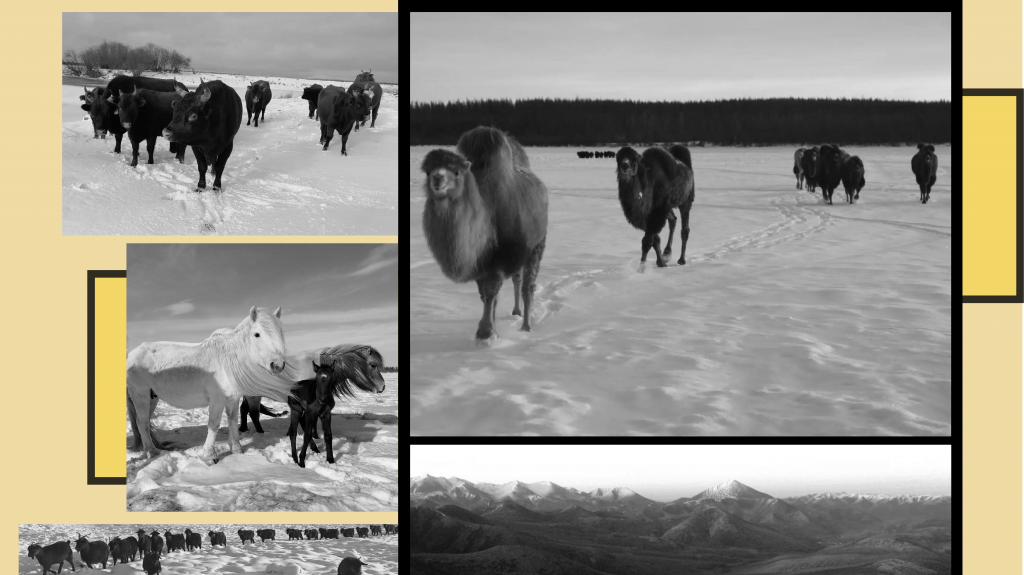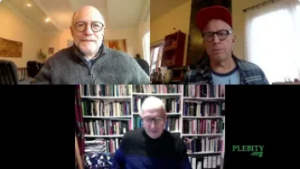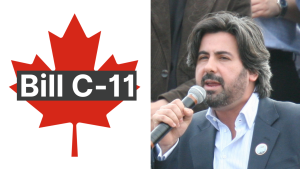
Photo illustration by author / Pleistocene Park Instagram
“Playing God doesn’t bother me in the least. We are already doing it. Why not do it better?” says Arctic ecologist Nikita Zimov. This is the commonly espoused philosophy of geoengineering zealots, i.e. climate scientists who emphatically believe that artificially altering environmental processes is a reasonable, even inevitable, solution to curb global warming.
In 1996, Nikita’s father, Sergey Zimov, founded Pleistocene Park, a nature reserve dedicated to mitigating climate change by restoring the existing tundra to its former grazing steppe ecosystem.
Pleistocene Park is located in northeastern Siberia on the Kolyma River 5 km south of Chersky, a largely abandoned mining town with a declining population of some ~3,000 residents. The area is one of the largest and most desolate places in the world. Winter temperatures can plunge to -50 degrees Celsius. Summers are short and mild, providing brief respite to the long, harsh winters.
On top of the brutal climate, the region has a dark past.
During the last Ice Age, the territory was once a major refuge for a number of plant and animal species, up until prehistoric humans drove most of these species to extinction.
Between the 1930s to the mid–50s, the region was also home to one of the most infamous Soviet-run labor camps, where over a million prisoners perished. Varlam Shalamov, a prisoner for 10 years (who also spent an additional seven years languishing in other labor camps), captured the tales of starving, overworked prisoners and the brutal conditions they endured in his book Kolyma Tales. Of the climate, Shalamov writes, “Longtime residents of Kolyma could determine the weather precisely even without a thermometer: if there was frosty fog, that meant the temperature outside was forty degrees below zero; if you exhaled easily but in a rasping fashion, it was fifty degrees below zero; if there was a rasping and it was difficult to breathe, it was sixty degrees below; after sixty degrees below zero, spit froze in mid-air.”
Today, the area, known as a ‘molecular freezer,’ contains below its surface the remains of numerous well-preserved megafauna. As the region warms, animal remains, formerly hidden away like time capsules waiting to be unearthed, are being discovered with increasing regularity. Scientists from all around the world come here to marvel at the excavated treasures. One of the more recent discoveries was a perfectly intact 50,000-year-old animal resembling a cave lion, its fur still attached.
As Sergey discovered, there is more carbon stored in the Arctic permafrost than there is in all the planet’s forests and the rest of the atmosphere combined. Once permafrost thaws, the stored carbon converts to carbon dioxide and methane and is released into the atmosphere in large quantities, accelerating global warming. The key to slowing global warming, scientists argue, is through permafrost preservation.
To do this, animals are needed – and a lot of them, to replenish the soil with essential nutrients, and keep it cool and tightly packed to the ground. Through the animals’ natural movements, the team hopes they will be able to transform the ecosystem to its former steppe state.
But because prehistoric humans killed most of these animals, they must start over and re-introduce new animals to the park.
So far, some 200 animals, including reindeer, Yakutian horses, moose, musk ox, yaks, sheep, reindeer, Kalmykian cows, and bison have been transported to this 144 square kilometer plot of land. Someday, too, the team hopes to add woolly mammoths (i.e., genetically modified elephant-mammoth hybrids) as well as predators, like Siberian tigers, wolves, and leopards to “regulate the animals.”
The Zimovs claim the project is ‘natural’ and humane, insisting that it is nothing like a zoo, but it doesn’t take much to see that it has many of the trappings of a zoo: non-native animals are forcibly transported thousands of kilometres by air and land and then confined to an artificially created environment. Their movements, reproductive behavior, and overall quality of life are highly controlled by the team that lives in the park. Many of the animals still rely on humans for food, and most are migratory, and require the space to freely roam, but because they’re fenced in, they’re not able to carry out their natural migratory patterns. And once more predators are introduced, the herbivores will have even less space to protect themselves that they otherwise would have in the wild.
It’s not clear what the rationale is for considering which (or how many) animals to import, or how existing wildlife will coexist with these animals, but the consequences are already being realized.
The park has seen a high number of fatalities over the years – many of which have presumably not been publicized (as the park often doesn’t disclose when things go wrong). Many of the park’s first residents, the Yakutian horses, were killed by existing predators on the land, others died from poisonous vegetation, while other horses managed to flee 1,000 kilometers to where they came from (obviously unhappy, their immediate instinct was to flee). In 2010, two muskoxen died shortly after arriving – one from infighting, the other from unknown causes. There may have been more deaths, but these are just some of the few that have been publicly disclosed.
Recently the park acquired domestic yaks from the Baikal Lake region, camels from Mongolia and central Asia, and bison from Denmark. While we don’t know where the yaks and camels came from, we do know the bison came from a bison farm, a popular destination for tourists. One can reasonably presume that this bison is not ‘wild’ and may not be able to adequately survive on its own under these specific conditions.
If this is the sort of activity that occurs at a nature reserve, it’s not unreasonable to see it as a cause for concern. Certainly, if these mishaps happened at a zoo, people would demand for its immediate closure. But because this experiment is framed as an exciting new frontier for geoengineering under the banner of saving the planet, there is unquestioning support and adulation.
Indeed, there is no such thing as humanely trapping an animal and transporting it to a strange, unfamiliar land, upon which the animal must re-learn how to live among the local biodiversity. Manipulating an animal’s natural movements is not any more natural or humane than gawking at animals trapped behind the bars of a cage.
These aren’t the only concerns.
The park recently announced that Alrosa, a leading global diamond mining company, would be its official partner. Alrosa also happens to operate in the same district as the park (is this mere coincidence or a business strategy?). Apparently, the park’s supporters are willing to turn a blind eye to this conflict of interest between a profit-driven corporation and a non-profit dedicated to environmental restoration. Of the partnership, the team wrote, “If the mining company is seeking ways to go carbon neutral [we] do not see much problem with that.” The park’s website doesn’t provide much detail beyond an announcement, although it does have a Patreon page it regularly updates, but it remains unclear how much information patrons are privy to.
Herein lies the problem. The same actors that destroy our land also have a hand in saving us from the destruction they themselves are responsible for. On top of this, the area sits on a vast swath of oil reserves: what will happen to the animals and the land if this area becomes geopolitically fraught? Based on the aforementioned partnership with the mining company, I suspect the park isn’t all that concerned.
There’s another questionable partnership that has emerged. The park recently announced it is working with Colossal, a new biotech start-up that aims to revive the woolly mammoth. (The woolly mammoth revival project was initially in the hands of another biotech called Revive & Restore, but they have since handed the reins over to Colossal). Together, the organizations hope to eventually re-introduce the woolly mammoth (i.e., the hybrid elephant) to the “natural world” in the park. The ethical questions surrounding de-extinction projects run the gamut, but again, such concerns are simply not worth entertaining among biotech enthusiasts.
This act of geoengineering – which uses existing life, not chemicals to achieve its goal – should presumably require input from various sectors to ensure it doesn’t do more harm than good. Many scientists believe such projects should adhere to a code of conduct and regulations that enforce minimum standards of operations. As it stands, there is a global dearth of regulatory bodies for such projects, and so initiatives like this enforce their own ad hoc standards which may not be in the best interest of the parties involved – particularly if such organizations claim to care about the environment while simultaneously partnering with companies who single handedly destroy it.
As is typical of other geoengineering projects, its supporters are unconcerned.
Indeed, contemporary environmentalists, biotech entrepreneurs, and activists all worship the project, elevating Sergey to that of an eccentric pioneer who is leading the charge on the most noble mission of all. The corporate media has also announced their allegiance to the project, hailing it as a hero’s journey, in which father and son must overcome the greatest challenge of all: defeating climate change. Some headlines include: “Mammoth task: the Russian family on a resurrection quest to tackle the climate crisis”, “A father and son’s Ice Age plot to slow Siberian permafrost thaw”, “Welcome to the world’s most significant rewilding project, which could see the return of the woolly mammoth.” The more unconventional the project, the more adulation it yields. It’s easier to worship the Zimovs, the Greta Thunbergs, and the Elon Musks of the world. That way, we can recuse ourselves of all responsibility while clinging to these idols, watching the collapse from afar.
These are the stories people crave. Even in the face of impending environmental collapse, the focus is on heroic father and son. Not boring stuff like ethics, regulation, or treatment of animals. That stuff doesn’t make for a feel-good news story.
The park, like all mainstream environmental projects, is singularly ego-centric, where the focus is on recreating nature to the way we want. Sergey himself admitted just as much. “It seems that the desire to “domesticate” nature lives in a person’s blood. In this sense, I am also no exception. . . I thought like an ecologist: let’s subjugate the ecosystem and make it home, because there is no other way for us to survive,” he says.
This isn’t a hero’s journey. This is the same story we’ve heard thousands of times before, and it’s the story that’s been woven into the fabric of modern civilization. Humanity’s very legacy is the subjugation of ecosystems. For too long we have destroyed land, depleted resources, pillaged ecosystems, poisoned waters, and disappeared species.
There is no hero in this story. Only one collective villain.
If we want to course correct and actually have some chance at saving our ecosystems, we have to change our approach. Shift our paradigm. Rip up the playbook and create a new one.
“It will be cute to have mammoths running around here,” Nikita says in an interview. “But I’m not doing this for them, or for any other animals. I’m not one of these crazy scientists that just wants to make the world green. I am trying to solve the larger problem of climate change. I’m doing this for humans. I’ve got three daughters. I’m doing it for them.” (Emphasis mine)
Like his dad, Nikita doesn’t care much for animals, or even the planet. He’s doing it for the human race. For his brood.
Nikita, like many others, including today’s ego-centric environmentalists, see the environment as something that is separate to them, a resource that is to be used and discarded whenever one feels like it. This is the ethos of contemporary environmentalism. It is utilitarian in nature and hyper-focused on metrics and targets. Everything else is secondary.
Environmentalism didn’t used to be this way.
When Rachel Carson, the ‘Mother of Modern Environmentalism,’ inspired the environmental movement in the 1960s, environmentalism wasn’t about relegating the Wild to the outer recesses of society, it was about coexistence, and interconnectivity. There was a real sense that our purpose was to live with the natural world, not reduce it to something that should be measured, or cordoned off, separate from us.
Somewhere along the way, the environmental movement became human-centric. We turned Nature into the Environment, Animals into Resources, and Land into Conservation Sites. And now biotech entrepreneurs like Stewart Brand, and tech elitists are sucking the soul out of a movement by injecting their sterile, techno-utopian beliefs and throwing money at projects that view the environment as an afterthought, not as the centerpiece. Bored of garden variety capitalist projects, their latest goal is the most ambitious: to subdue nature once and for all.
Safe to say I’m not convinced that we will ‘save our planet’ from this utilitarian framework. But this utilitarian framework is the approach from which the mainstream climate debate operates. Nature, however, is not beholden to metrics or targets. And to turn nature, in this case, animals, into the very metrics we use to measure our own progress, is counterproductive.
As Charles Eisenstein writes, “Climate change is challenging us to rethink our long-standing posture of separation from nature, in which we think we can endlessly engineer our way out of the damage we have caused. It is calling us back to our biophilia, our love of nature and of life, our desire to care for all beings whether or not they make the greenhouse gas numbers go up or down. Geoengineering, beyond its catastrophic risks, is an attempt to avoid that call, to extend the mindset of domination and control to new extremes, and to prolong an economy of overconsumption a few years longer.”
The environmental movement has gone mainstream, and in its popularity, its messaging has been diluted to accommodate the status quo and promote baby step solutions to pacify the populace and ease the burden of responsibility. ‘That’s for someone else to sort out,’ we tell ourselves. As a result, we cling to geoengineering projects because it eases the burden of personal responsibility, and puts the onus on something else to save us, so long as it means we don’t have to sacrifice our own lifestyles, because the latter is considered too radical.
Buddhist monk Thich Nhat Hanh coined the word interbeing to describe a state of interconnectedness of all life and phenomena. This is the approach that we must take if we want to learn from our past, and create a better future for all life on this planet. If we don’t abandon the shackles of this restrictive utilitarian framework and take some personal responsibility over our own actions, we will never be able to reverse, let alone slow, our path of destruction.



